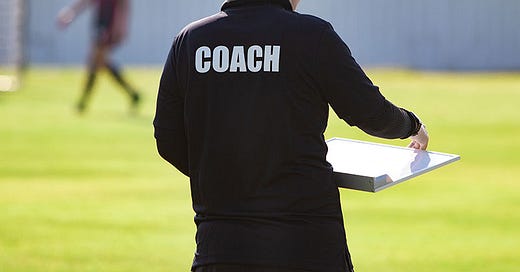In recent years, Game-Based Approaches (GBAs) and the Constraints-Led Approach (CLA) have promised to revolutionise how we coach and teach sport. Rooted in constructivist and ecological theories of learning, these methods shift the focus from repetitive drills to dynamic, context-rich learning environments. But if these pedagogies are so transformative, why aren’t they being used more widely and effectively?
A new systematic review published in Quest by Richardson and colleagues (2024) offers the most comprehensive synthesis yet of how sport coaches and educators perceive, and struggle to implement, GBAs and CLA. Drawing on 29 qualitative studies conducted between 1982 and 2020, the review peers the curtain on the theory–practice gap that continues to haunt innovation in sport pedagogy.
What Are GBAs and CLA?
Game-Based Approaches include pedagogical models like Teaching Games for Understanding (TGfU), Game Sense, and the Tactical Games Model. These approaches emphasise tactical awareness, decision-making, and skill execution through modified games and guided discovery. Meanwhile, the Constraints-Led Approach (part of the broader Nonlinear Pedagogy movement) focuses on manipulating individual, environmental, and task constraints to shape emergent skill and learning patterns.
Despite some shared principles, these models are underpinned by different theoretical roots, social constructivism for GBAs and ecological dynamics for CLA. Richardson et al. make clear: CLA is not just another GBA variant. This distinction matters.
Why Isn’t This Taking Off?
1. Practitioners’ Learning Beliefs
Many coaches and teachers bring entrenched beliefs about how learning should occur; often shaped by their own playing and teaching experiences. Some are open to learner-centred models; others remain skeptical, fearing a loss of control or diminished performance outcomes. Even when initial skepticism fades, consistent support is crucial for sustained pedagogical change.
2. Pedagogical Knowledge Gaps
Understanding the mechanics of these approaches (especially CLA) requires more than surface-level familiarity. The review notes that coaches often struggle with planning, questioning techniques, and adapting their sessions to suit different learners. This lack of confidence can drive practitioners back to more traditional, direct instruction.
3. Institutional and Cultural Constraints
It’s not just about individual buy-in. Wider educational and sporting cultures often don’t support the time, experimentation, or reflection these approaches require. Coaches feel pressure from performance outcomes, parental expectations, and assessment regimes that still value standardised delivery over adaptive, context-rich learning.
4. Research Gaps and Methodological Weaknesses
Of the 29 studies reviewed, most were short-term in nature, and based on single-method designs (primarily interviews). Many lacked clarity on sampling strategies, researcher–participant relationships, or theoretical positioning. This highlights a broader issue: we still know too little about how these pedagogies are used in varied real-world settings, particularly in community sport and under-researched game types like striking or target games.
What Needs to Change?
Richardson and colleagues call for future research to dig deeper into:
How assumptions about learning shape pedagogical uptake.
The role of peer, parent, and institutional influences on coaching behaviours.
Better use of mixed and visual methods to capture the complexity of practice.
More longitudinal studies and engagement with underrepresented sports and settings.
Perhaps most importantly, they argue for a shift away from binary thinking: GBA or CLA, traditional or progressive, toward a more integrated, reflective practice. As the authors put it: we need “both/and” thinking, not “either/or” dogma.
Final Thoughts
For those of us working in sport, education, or coach development, this review is both sobering and inspiring. It reminds us that changing pedagogy is not just a matter of delivering new methods, but of supporting deep shifts in belief, identity, and practice…over time and in context.
So, let’s remember: the barriers are often philosophical, structural, and deeply human.
Citation
Richardson, S. J., McRobert, A. P., Vinson, D., Cronin, C. J., Lee, C., & Roberts, S. J. (2024). Systematic Review of Sport Coaches’ and Teachers’ Perceptions and Application of Game-Based and Constraints-Led Pedagogy: A Qualitative Meta-Study. Quest, 76(1), 113–134. https://doi.org/10.1080/00336297.2023.2257343




